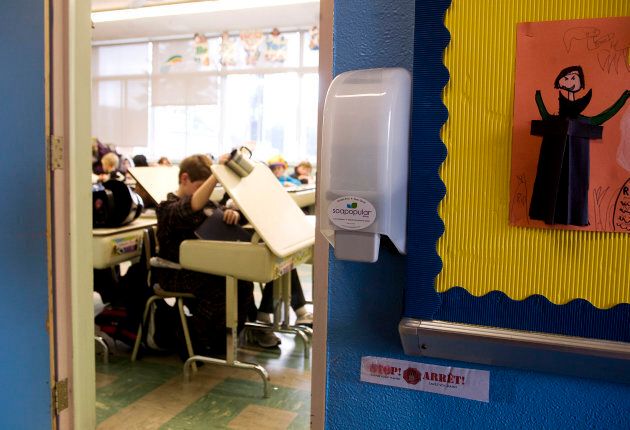In these waning weeks of summer, Canadians across the country prepare for the inevitable return of the school year. New clothes must be purchased. Various digital devices require upgrading or replacement. Supplies for lunches have to be amassed. The lists can be large, but they can miss a very important necessity in the form of products to maintain hygiene while at school.
For decades, researchers have shown educational facilities can be a major source for infection. Most of the time, the cause happens to be spread among individuals. Regardless of how much teaching goes into personal distancing, when it comes to the younger generation, it can be difficult if not impossible to convince kids to stay away from those who are sick.
There is, however, another influence on spread of infections that may be lessened. It comes in the form of contamination. Objects such as water fountains, student desks, computer keyboards, mobile devices and for those younger grades, toys, can be covered in microbes, including pathogens. Kids can pick up bacteria and viruses from these surfaces and transfer them to their noses and mouths. The result is an increased risk for infection and a greater likelihood for health troubles.
This type of pathogen spread can be prevented with some simple hygiene measures. The most obvious is the use of soap and water, which is the gold standard. However, that requires a sink, running water, a full dispenser and, of course, the right technique, which is usually the reason this approach can fail.
Another approach is to use the concept of sanitization. The goal in this approach is to lower the amount of bacteria and viruses on the hands — and other touched items — so there is a reduced risk for infection. This is especially important during those first few weeks of school as well as during the cold, flu and norovirus season later on.

Sanitization works thanks to a phenomenon known as minimal infective dose. Our bodies need to be exposed to a certain number of pathogenic bacteria and/or viruses to become sick. The numbers vary depending on the species but in most cases, a person needs to be exposed to hundreds if not thousands of individual organisms before illness occurs. The only exception is norovirus in which only a few dozen viruses can lead to troubles.
Over the years, research has examined the different types of sanitization required in order to keep pathogens below that minimal infective dose both on hands and objects. The most effective for both happens to be a simple molecule many adults know quite well. It's ethanol.
The use of ethanol in a variety of products, including hand sanitizer and wipes can help to reduce the levels of bacteria, viruses, and other potentially pathogenic microbes from both hands and surfaces. They are easy to use and require no more than about 15 seconds to ensure safety.

When used regularly, ethanol-based products can be an effective means to lower the spread of infections. Numerous studies have revealed the inclusion of these items along with a little education can go a long way to keep kids safe. The only requirement is that these products need to be at hand whenever the risk arises.
Unfortunately, in light of the continuing economic pressures on education, this necessity may not be fulfilled. Thankfully, both hand sanitizer and wipes are available in stores and can be picked up along with the rest of the back-to-school merchandise. Also, they are relatively inexpensive in comparison to the costs for the medicines and time needed to manage and/or treat infections.
Of course, these products are only effective if they are used properly. That requires some training, which can be performed at home before children head to classes. With a little practice, they'll be good to go and increase their chances at staying safe.
If the surface is unfamiliar or happens to be regularly touched by others, it's probably going to be contaminated.
For hand sanitizers, the process is simple. Add enough onto the hands to ensure they stay wet for at least 15 seconds. Rub the hands together to ensure the entire area is covered. Once the hands are dry, they are good to go.
When it comes to wipes, the best method is to quickly use them on surfaces before they dry out. Try to keep that 15-second wet time much like on the hands. Usually, one will be enough to cover a desktop, mobile device, toys and even water fountain tap.
As to when sanitization should be performed, there is an easy rule to follow. "If you don't know, let it flow." In other words, if the surface is unfamiliar or happens to be regularly touched by others, it's probably going to be contaminated. Use the alcohol either on the hands or the surface to reduce the chances for infection.
Follow HuffPost Canada Blogs on Facebook
Also on HuffPost: